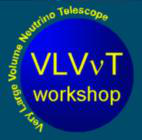Orateur
M.
Ronan MICHEL
(Alcatel-Lucent Submarine Networks)
Description
Large volume Neutrino telescopes require real time communications back to shore and a sizeable amount of power at the bottom to feed the detectors and the associated electronics. The Telecommunication industry has developed a family of cabled products that have been cost optimized over the years. These submarine cables using optical fibres and a single copper conductor are ideal to achieve the transport of signal and energy. Sea return is required but the overall solution is far less expensive than using a bespoke multi-conductor umbilical design.
The quality of the Neutrino detection may require the photo-multipliers to be located in a relatively deep area to limit ambient noise. This may dictate the choice of the location, which may be tens of kilometres away from the land-based station. If this distance is relatively short then high voltage AC powering can be envisaged. Yet, the cable capacitance might become an issue for distances beyond 50 km where the amount of power lost in the cable may become too important. Alcatel-Lucent is developing a 10 kV DC solution based on the advent of a new device converting the 10 kV DC into a more usable 350 or 400 V DC user voltage.
Alcatel-Lucent believes that a 10 KV DC solution using MVCs can efficiently bring power to areas located up to 600 km from the shore. In this case, repeaters are used to amplify the light signal along the way. Alcatel-Lucent has qualified repeaters able to sustain a permanent line current of up to 8 A.
Auteur
M.
Ronan MICHEL
(Alcatel-Lucent Submarine Networks)

